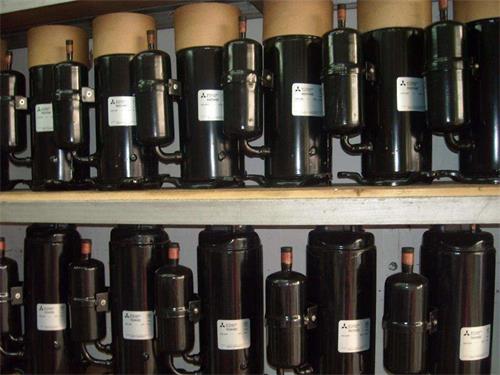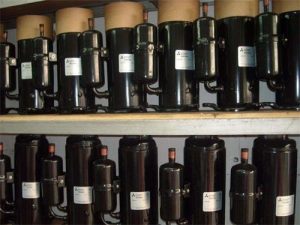Compressor overheats protection is to protect the compressor motor from being burned. When the motor temperature or the compressor’s own temperature exceeds a certain value, the compressor is protected by some built-in or external protection devices to disconnect the working power of the compressor.
The size of the superheat of the absorbed refrigerant vapor is an important reason for whether the compressor is overheated or not. The main reasons for overheating are as follows: high return gas temperature; high motor heating; high compression ratio; high condensing pressure; and improper selection of refrigerant.
(1) High return gas temperature is relative to the evaporation temperature for. To prevent the return of liquid, the general return gas pipeline requires a 20°C return gas superheat degree. If the return line insulation is not good, the superheat is much higher than 20 ° C. The higher the return temperature, the higher the cylinder suction temperature and exhaust temperature. Return air temperature per 1 ° C, the exhaust temperature will rise 1 to 1.3 ° C.
(2) Motor heating for the return gas cooling compressor, refrigerant vapor in the flow through the motor cavity by the motor heating, cylinder suction temperature is raised again. Motor heat is affected by power and efficiency, and power consumption is related to displacement, volumetric efficiency, working conditions, friction resistance, etc.
(3) Compression ratio is too high exhaust temperature is affected by the compression ratio, the larger the compression ratio, the higher the exhaust temperature. Reducing the compression ratio can reduce the exhaust temperature, the specific methods include increasing the suction pressure and reducing the exhaust pressure.
(4) Anti-expansion and gas mixing after the start of the suction stroke, the high-pressure gas remaining in the cylinder gap will have a counter-expansion process. After the counter-expansion of gas pressure back to the suction pressure, used to compress this part of the gas and the energy consumed in the counter-expansion will be lost. The smaller the backlash, on the one hand, the smaller the power consumption caused by back-expansion, on the other hand, the larger the suction volume, the compressor energy efficiency ratio is increased.
The back expansion is caused by the cylinder backlash, which is a disadvantage that cannot be avoided by conventional piston compressors. The gas in the valve plate exhaust hole can not be discharged, there will be counter-expansion.
(5) Compression temperature rise and refrigerant types of different refrigerants have different thermophysical properties, and the amount of exhaust temperature rise after experiencing the same compression process is different. Therefore, for different refrigeration temperatures, different refrigerants should be used.




